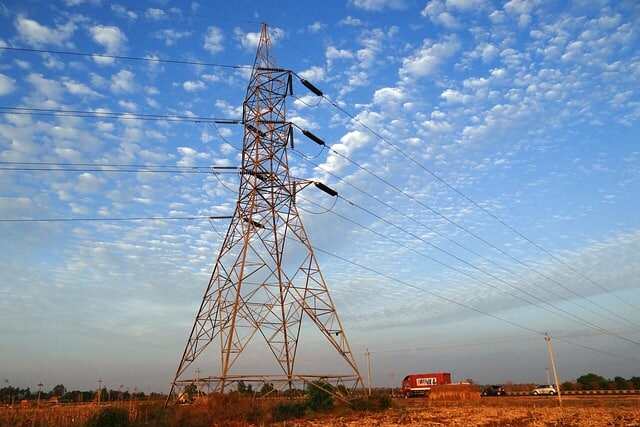Viktiga testkrav för krafttornsinfrastruktur
Power tower installationen utgör en avgörande fas i energiinfrastrukturutvecklingen och kräver stränga testprotokoll för att säkerställa säkerhet, tillförlitlighet och optimal prestanda. Dessa höga konstruktioner, som utgör grunden för våra eltransmissionsystem, måste genomgå omfattande utvärdering innan de kan integreras säkert i det befintliga nätverket. Att förstå dessa testkrav är avgörande för energiföretag, entreprenörer och infrastrukturutvecklare för att upprätthålla efterlevnad och operativ excellens.
Värdering av konstruktionens hållfasthet
Grundläggningstestprotokoll
Grunden fungerar som det kritiska stödsystemet för alla projekt med installation av krafttorn. Ingenjörer måste utföra noggranna jordanalyser och hållfasthetstester av grunden för att verifiera konstruktionens stabilitet. Detta inkluderar djup jordprovtagning, bedömningar av bärförmåga samt geologiska undersökningar för att förstå förhållandena under markytan. Avancerade testmetoder som pålars integritetstest och korshålssonikloggnig används för att utvärdera grundens integritet innan torninstallationen påbörjas.
Dessutom spelar betongtester en viktig roll i grundutvärderingen. Kärnprover utsätts för tryckhållfasthetstest, medan ultraljudspulshastighetstest kontrollerar inre defekter eller hålrum. Dessa mätningar säkerställer att grunden kan motstå både statiska och dynamiska laster under hela tornets driftslevnad.
Stålkonstruktionsutvärdering
Tornets ståldelar genomgår omfattande materialtester innan montering. Detta inkluderar icke-destruktiva testmetoder såsom ultraljudstestning, magnetpulverinspektion och radiografisk testning för att upptäcka eventuella tillverkningsfel eller materialinkonsekvenser. Varje strukturell komponent måste uppfylla specifika krav på hållfasthet och slitstyrka enligt internationella standarder.
Svetskvalitetsbedömning är en annan avgörande aspekt av strukturtestning. Alla svetsförband genomgår visuell inspektion och specialiserad testning för att verifiera deras integritet. Ingenjörer använder färgpenetranttestning och magnetpulverinspektion för att identifiera ytskador och närytskador som kan kompromettera konstruktionens stabilitet.

Verifikation av elsystem
Krav på isoleringstestning
Installation av krafttorn kan inte fortsätta utan noggrann isolationsprovning. Provningar av högspänningsisolation motstånd verifierar integriteten i de elektriska isolationssystemen. Ingenjörer mäter läckström och genombrottsspänningsnivåer för att säkerställa att isolatorer kan tåla driftsspänningsnivåer och påfrestningar från miljön. Dessa provningar inkluderar vanligtvis torra och våta provningsförhållanden för att simulera olika väderförhållanden.
Delurladdningsprovning hjälper till att identifiera potentiella svaga punkter i isolationssystemet innan de utvecklas till större fel. Avancerad diagnostikutrustning mäter koronurladdningsnivåer och elektromagnetiska emissioner för att upptäcka tidiga tecken på försämring av isoleringen.
Utvärdering av jordningssystem
Ett robust jordningssystem är avgörande för säker drift av krafttorn. Mätning av jordningsmotstånd bedömer effektiviteten i jordningsnätet när det gäller att avleda felströmmar och åsknedslag. Steg- och beröringspänningmätningar säkerställer säkerheten för underhållspersonal och omgivande samhällen. Markmotståndsmätningar hjälper till att optimera design och placering av jordningsnät.
Regelbunden testning av överspänningsavledare och andra skyddsanordningar verifierar deras förmåga att hantera kortvariga överspänningar. Dessa komponenter genomgår både fabriksgodkännandetest och verifiering på plats innan tornet kan spänningsätas.
Miljöpåverkansstudier
Bedömning av elektromagnetiska fält
Innan krafttorn placeras ut är omfattande studier av elektromagnetiska fält (EMF) obligatoriska. Dessa bedömningar mäter de förväntade fältnivåerna på olika avstånd och höjder från tornet. Ingenjörer använder sofistikerad modelleringsprogramvara för att förutsäga EMF-nivåer under olika driftsförhållanden och säkerställa efterlevnad av regulatoriska gränsvärden.
Långsiktiga övervakningsplaner måste upprättas för att följa EMF-nivåer under hela tornets livstid. Detta inkluderar periodiska mätningar och dokumentation av eventuella förändringar i fältnivåernas mönster som kan påverka närliggande samhällen eller känslig utrustning.
Miljööverensstämmelseprovning
Miljöpåverkansbedömningar utvärderar tornets effekt på lokala ekosystem. Detta inkluderar studier av fågelmigrationsmönster, vildlivskorridorer och påverkan på vegetation. Ljudnivåtester säkerställer efterlevnad av lokala regler, särskilt för torn utrustade med koronaringar eller andra bullerproducerande komponenter.
Väderbeständighetstestning verifierar tornets förmåga att motstå lokala klimatförhållanden. Detta inkluderar vindtunneltest, simulering av isbelastning samt utvärdering av korrosionsmotstånd för installationer vid kustnära områden.
Testning av kommunikationssystem
Radiofrekvensstörningstester
Uppställning av strömtorn kräver noggrann övervägning av potentiell radiofrekvensstörning. Ingenjörer utför omfattande RF-undersökningar för att identifiera eventuella påverkan på befintliga kommunikationssystem, inklusive nödservrar, sändnät och mobilkommunikation. Dessa tester hjälper till att avgöra behovet av ytterligare skärmning eller positionsförändringar.
Mätningar av signalstyrka och spektrumanalys säkerställer att tornets drift inte stör kritiska kommunikationskanaler. Detta inkluderar tester under olika väderförhållanden och lastscenarier för att ta hänsyn till alla tänkbara interferensmönster.
Integration av SCADA-system
Testning av övervaknings- och datainsamlingsystem (SCADA) verifierar korrekt integration med kraftnätets kontrollnätverk. Kommunikationsprotokoll testas noggrant för att säkerställa tillförlitlig datatransmission och möjlighet till fjärrövervakning. Ingenjörer utför slut-till-slut-testning av alla sensorer, styr- och nödavstängningsförfaranden.
Säkerhetstestning mot cyberhot har blivit allt viktigare vid införande av krafttorn. Systemen måste visa motståndskraft mot potentiella cyberrisker samtidigt som de bibehåller driftseffektivitet och tillförlitlighet.
Vanliga frågor
Hur lång tid tar hela testprocessen vanligtvis innan krafttorn tas i drift?
Den omfattande testprocessen för införande av krafttorn sträcker sig vanligtvis över 3–6 månader, beroende på tornets komplexitet, plats och regulatoriska krav. Denna tidsram inkluderar initiala bedömningar, strukturell testning, verifiering av elsystem samt slutförandet av integrationstestning.
Vilka är de mest kritiska testerna som inte kan kompromissas under distribution?
De mest kritiska testerna inkluderar bedömning av grundstyrka, verifiering av strukturell integritet, isoleringstestning och utvärdering av jordningssystem. Dessa tester påverkar direkt säkerheten och tillförlitligheten och måste uppfylla stränga standarder oavsett projekttidslinjer eller budgetrestriktioner.
Hur ofta bör testning upprepas efter den första installationen av krafttorn?
Regelbunden underhållstestning bör ske årligen, med omfattande strukturell och elektrisk testning vart tredje till femte år. Specifika komponenter kan dock kräva mer frekvent testning beroende på miljöförhållanden, driftsbelastning eller regulatoriska krav.
Vilken roll spelar vädret i testningsplanen?
Väderförhållandena påverkar provningsplaneringen avsevärt, särskilt för utomhusbedömningar som EMF-studier och RF-störningstester. Vissa tester måste utföras under specifika väderförhållanden för att säkerställa korrekta resultat, vilket kan förlänga den totala provningstiden.

